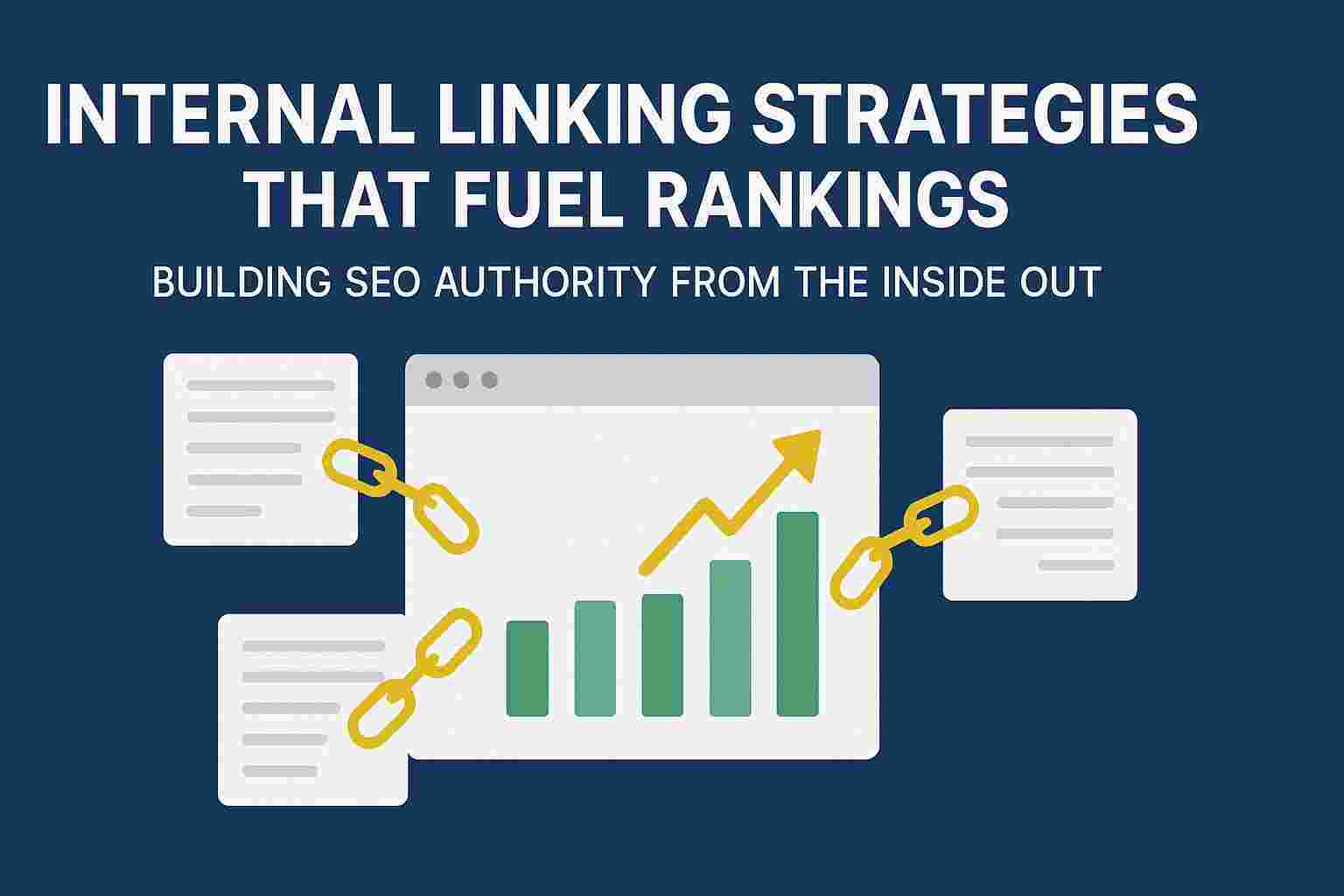Internal Linking Strategies That Fuel Rankings: Building SEO Authority from the Inside Out

Most marketers appreciate its value in getting backlinks from other external domains. Internal linking? Not so much. It usually becomes an afterthought, just thrown in beneath some bigger, shinier tactic. Internal linking is one of the most sure-to-work and scalable methods to increase SEO, increasing page authority, and guiding users and search engines alike through your content ecosystem.
It’s not just for SEO hygiene-their internal linking will build a strong base on which to compound.
Why Internal Linking Deserves More Attention
Done poorly, internal linking will confuse and inefficently direct search engine crawlers through your site.The process of internal linking is like giving Google a roadmap, indicating which pages are important to it, how they are interrelated, and where the flow of authority should go.
More importantly, internal links work toward enhancing user experience. They keep the visitors moving, discovering, and engaging on site, decreasing bounce rates. They keep the visitors glued to the site.
In-profit advertising is not what such a thing is for; it serves the admiration of ads.
Anchor Text: The Unsung Hero of Context
Let’s start with something deceptively simple: anchor text.
Internal linking anchor texts are one significant factor that is too often overlooked. So instead of just throwing up “click here” or “learn more,” you might want to provide descriptive terms that clearly inform the user what the linked page is about. This gives users and search engines some context.
For example, linking to a customer onboarding guide with the anchor text “improve your SaaS onboarding experience” is much clearer and more relevant than a vague one.
But be careful not to overdo the keyword stuffing. It will make your content feel unnatural. Use natural language. Think of what your users would say to describe that page and write something similar.
Structure Matters: Depth, Not Just Quantity
Not all internal links are created equal. It is not just about the number of links you put in; it also matters where they go and to what extent they penetrate.
Internal links tend to point hugely toward upper-site level or top-traffic pages, thus depriving deeper, less-visited content-evergreen blog posts, product explainers, niche guides-of much-needed limelight. These pages put in work but barely get any visibility. It’s through strategic internal linking that they’re shoved into the limelight.
Here’s a tip: Identify about 5 to 10 highly authoritative pages on your website, then link from those pages to mid- and bottom-funnel content that needs more attention. This will not just boost rankings but will pour some strength into your whole content architecture.
Link Hubs: Your Secret Weapon for Topic Authority
One really powerful strategy that gets overlooked is building internal link hubs. These are cornerstone pages which are often long-form guides or category pages. They then link out to a series of related content. Think of these as topic clusters. For example, a topic cluster around “B2B SaaS lead generation” would link to posts on paid media, landing page CRO, LinkedIn strategies, and lead scoring models. And each of those should also link back to the central hub.
This builds a network of relevance from one central theme, something search engines really love to see. It signals topical authority and boosts ranks, not just for one page but for an entire bundle of content.
Use Tools, But Don’t Blindly Automate
Internal linking can be easy with SEO tools. Platforms like Ahrefs, Screaming Frog, or CMS plugins may monitor orphan pages, suggest internal links, or crawl depth audits.
But this shouldn’t be a fully automated job.
Links should not be set for the sake of setting them. Are there any enhancements to the user’s journey because of this link? Could it be better placed? Does it gently push the reader deeper into the funnel or toward another valuable resource?
Think of it as virtually guiding a reader one step further, as opposed to just dropping a hyperlink.
Common Mistakes That Undermine Your Strategy
Even with the right intentions, internal linking could go wrong under certain circumstances. Here are some red flags to keep in mind:
- Inconsistency with anchor text: Having five different phrases linking to the same page could confuse engines. Try and be consistent but keep it natural.
- Not keeping mobile usability in mind: Be very sure the links are easy to tap and don’t disrupt the content flow on small screens.
- Link without explanation: A link that drops into a sentence without proper framing stands a greater chance of being overlooked by both humans and bots.
Why Internal Linking Supports Smarter Growth
A solid internal linking strategy increases ranking in SERPs, while also enhancing the reputation of the brand to be an authority across themes and topics.
This is especially true for SaaS companies in the sense that the content usually covers multiple personas, use cases, and potential stages of the buyer journey. To guide users along the ecosystem governs through semi-opaque brow-labeling would not suffice. It calls for deliberate intent.
This is something a good marketing agency for SaaS understands deeply. Beyond content creation and optimization, they know how to architect internal pathways that amplify your visibility, increase engagement, and accelerate discoverability of your most valuable pages.
Measuring the Impact of Internal Links
Internal linking success doesn’t always show up as a vanity spike. You need to look at:
- Improvements in organic rankings for key pages
- Increased crawl frequency and indexation
- Time on site and average pages per session
- Growth in traffic to underperforming or newly linked content
Track these over time not in isolation, but as part of your overall content performance. Internal links don’t always bring instant results, but they build steady momentum.
